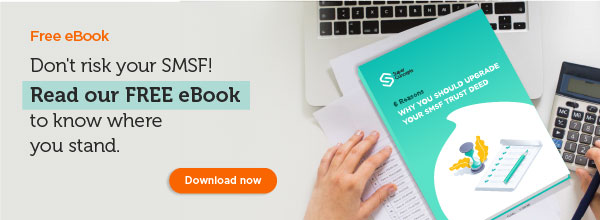

The answer to this really hinges on the quality of other documents and procedures the trustee uses to operate the SMSF.
If we can sit up the significant activities and the extent to which they need to be documented, we would be looking at acceptance of contributions, payment of benefits, and investment decisions. So, what are the considerations for each of these types of actions?
For contributions, there are two areas to consider; one is the receipt rules, particularly concerning the work test and classification of contribution types, e.g. concessional versus non-concessional.
From a work test point of view, the main issue is verification that the person met the work test before the trustees accepted the amount; thankfully, after 1 July 2022, this responsibility will not rest with the trustees.
The classification of contributions questions can generally be traced to information sources that come with the payment. If the contribution is made via SuperStream, then data is provided that will mean the trustees have a source of classification. If the contributions are personal contributions, the trustees can generally rely on the use of an ATO notice of intent to claim a tax deduction form to determine whether a personal contribution is a concessional contribution or not.
This means the main place where additional information may either be sought by the trustees or needs to be provided by the contributor will be spouse contributions. This is because there is no standard mechanism for informing the trustee that the contribution is this type.
Other types of non-concessional contributions such as downsizer, small business CGT, and personal injury amounts have specific ATO forms that are required to accompany these contributions. This means there is no need for the trustee to specify any decision about these contributions.
The other consideration for contributions is the use of so-called contribution reserving. Because contribution reserving requires the trustee to make a decision not to allocate a contribution on the date it is received, and this is generally different from the treatment of all other contributions, there will need to be documentation showing the trustee made this change to their normal procedure. Not only will there need to be the trustee's decision to reserve the contribution on the receipt they will also need to be a documented decision on the allocation of the contribution to the member from the reserve.
For benefit payments, the critical issue here is that these are not necessarily frequent events and because SIS requires certain events to occur prior to a condition of release being met and an amount paid from an SMSF, the trustees need to collect that information from the members asking for a benefit to be paid. The trustees then need to decide that the evidence they've received is accurate and meets the SIS requirements, and therefore, they will pay the benefit. Hence this becomes a decision that should be documented.
For pensions, of course, this is a little bit more complicated because we are generally not talking about a single payment, and as discussed previously in our blog "The perennial pension paperwork problem," there needs to be supporting material that allows the trustee to make not just the initial pension payment but any subsequent payments to the member in a pension form.
The final element that we need to talk about is investment decisions. One of the questions is - Do I need to document every single purchase and sale of investment? And the answer to that is driven by other paperwork the trustee has completed, particularly the SMSF's investment strategy. The more quantifiable the investment strategy content is, the easier it is to rely on that document for future investment decisions.
Nevertheless, some investment decisions are still probably worth documenting; these would include:
• Acquisition of direct property, particularly as there may need to be other documents signed on behalf of the trustees such as rental agreements, agent appointments and service providers selected to handle repairs and maintenance,
• Implementation of any Limited Recourse Borrowing Arrangement as there would be investment strategy considerations as well as additional documents to be executed such as custodian trust deeds and loan agreements,
• Any collectable which then may need to have documentation relating to insurance, storage and possible leasing
• Loans by the SMSF to non-related parties would require a written loan agreement specifying terms and conditions applicable to the loan,
• Any "in specie" contribution or acquisition from a member of the SMSF or a related party, as this would need to be tested against the SIS acquisition rules and possibly the 5% in-house asset limit,
• Any non-public asset investment to confirm it is not an acquisition from a related party or is within the permitted SIS reacted party acquisition and in-house asset rules.
• Any in-house asset acquisition should be documented as the 5% testing of the amount needs to be verified at the time of acquisition, as well as outlining how the continued monitoring of the limit will be conducted,
So the easiest way to summarise when trustees should document decisions comes down to whether they need to prove to someone else the basis for a decision or can they rely on other documents that already exist.

Wondering whether your SMSF Trust Deed needs an update?

This eBook, written by one of Australia's most trusted SMSF experts, Graeme Colley, uncovers 6 reasons why you should update your trust deed.
To learn more about how our range of SMSF services phone us on 1300 023 170 or request a call back.
Alternatively click through to view our range of services for trustees, accountants and advisers.